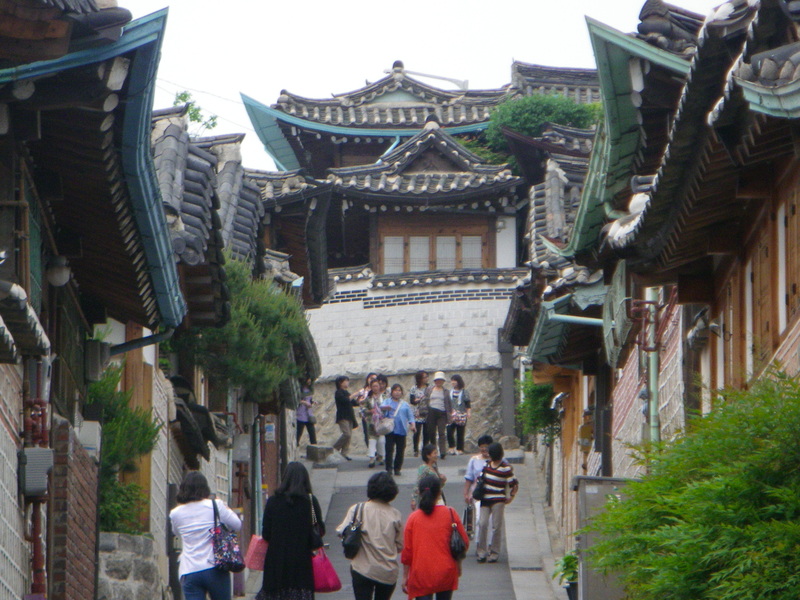
The three royal palaces are, in order: Changdeokgung palace, which is in the north-east of the old Seoul and near some mountains, Deoksugung palace, near downtown, and Gyeongbokgung palace, to the west of Changdeokgung.
The hanok village is called Bukchon, and is on a little hill near Changdeokgung palace. It is interesting in itself, and also interesting that this traditional form of architecture has been largely replaced within Korea.

There are 8 well-known and mapped "Views of Bukchon". From one of them, you can see North Seoul tower on Namsan.
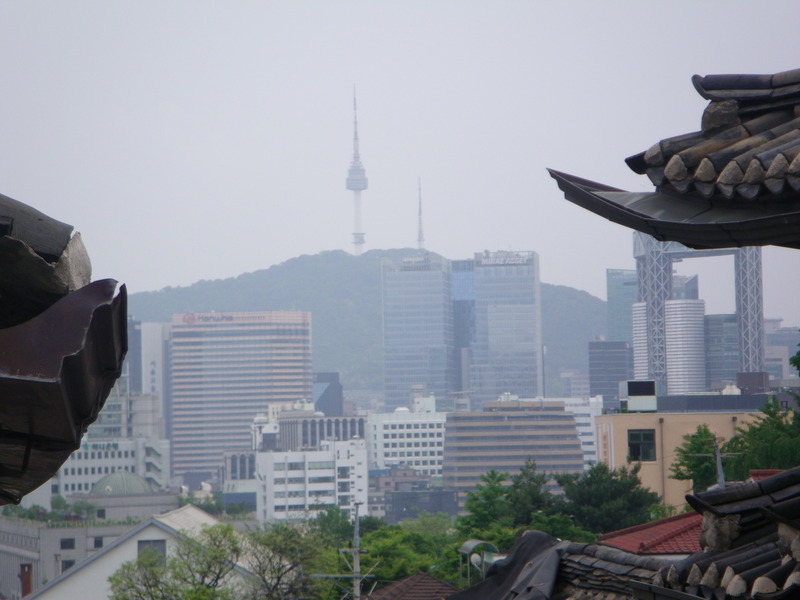
And of course, also some well-known characters.

The first royal palace, Changdeokgung, is the one in best shape -- it was only destroyed once by an invading Japanese army, in 1592, and rebuilt in 1610. It was originally conceived of as a secondary palace, but after Gyeongbokgung was destroyed and not rebuilt in 1592, Changdeokgung became the royal palace. It is quite nice, with both majestic courtyards and intricate designs.
I took a tour, and one of the things I found is there is a stepping stone with a phoenix carved on it in front of major royal buildings. The phoenix is a royal symbol here, and only the king was allowed to step on these stones.

I also found out that the most prolific of the kings had 10 concubines and 28 children, and that there are no direct descendants left of the last king.
The palace is built on a non-symmetrical plan, the better to fit in to the hilly area it is built on. The ceremonial gate, Donwhamun, is quite impressive.
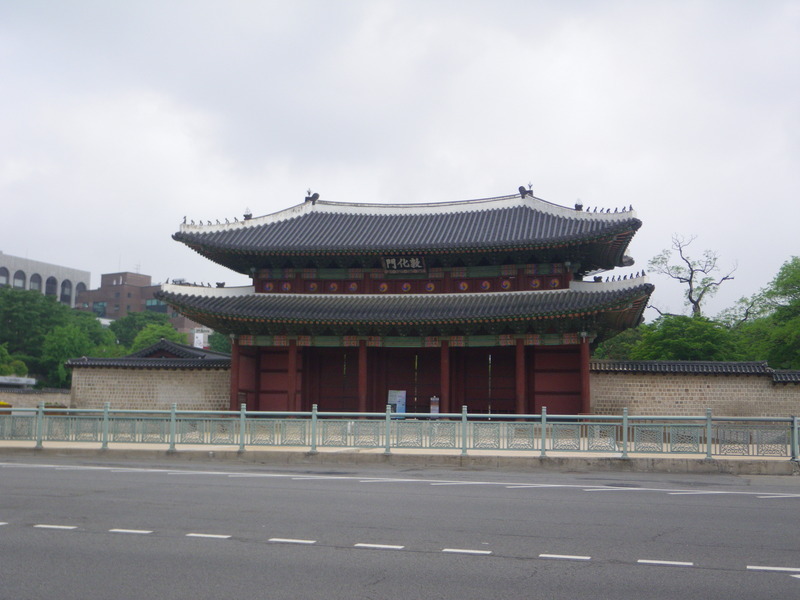
Behind the throne is a painting (this was the case in all three palaces) with symbols of Korea, including always 5 mountains.
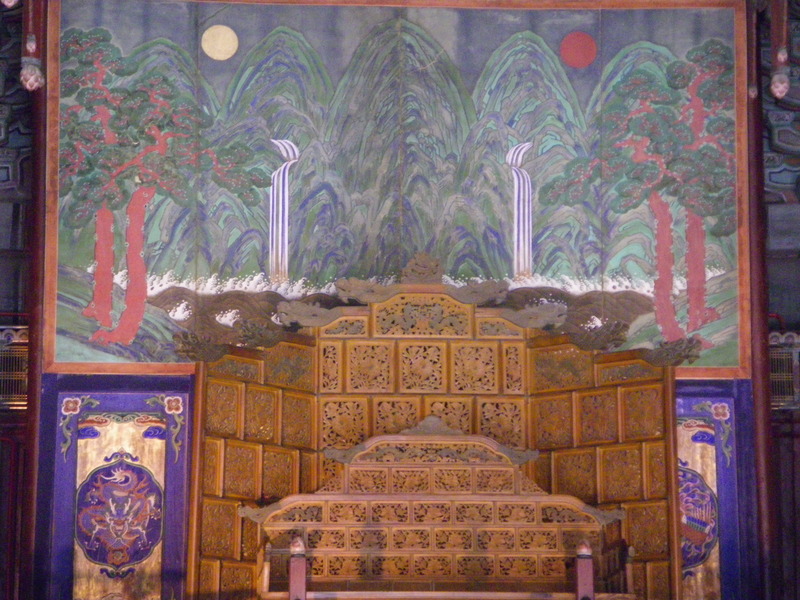
Our tour guide wore a traditional dress.

Outside one of the buildings was a hemispherical sundial.
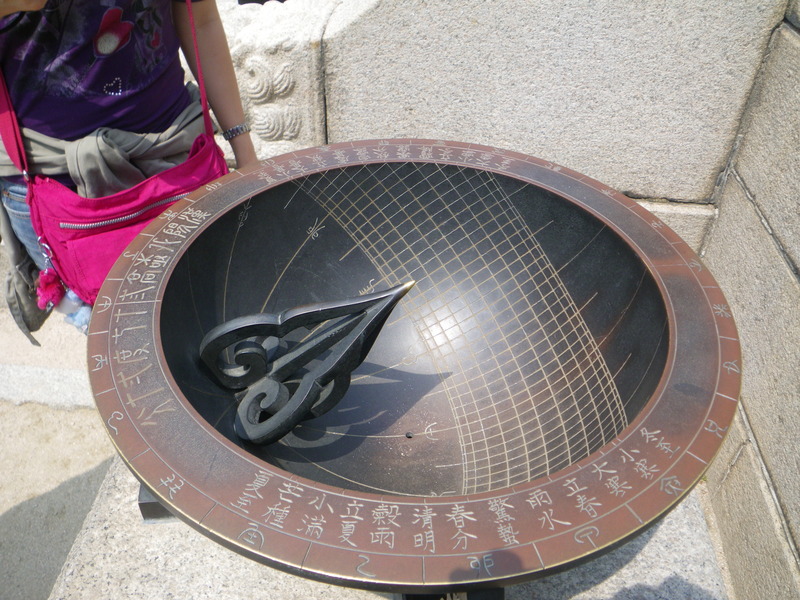
Along the way to the second palace, I passed a statue of a famous Korean admiral.
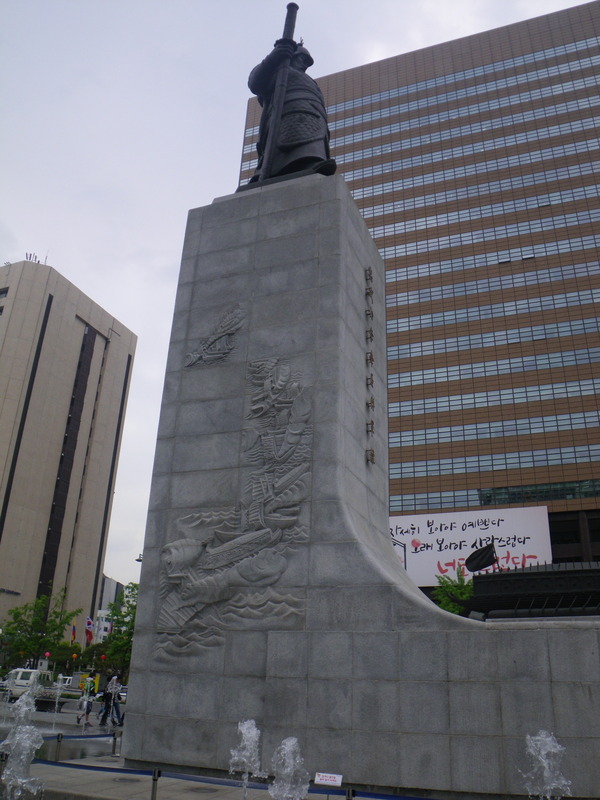
Outside the palace, the changing of the guard was cancelled due to the rain, but the guards are still quite interesting (I think the beard is fake).
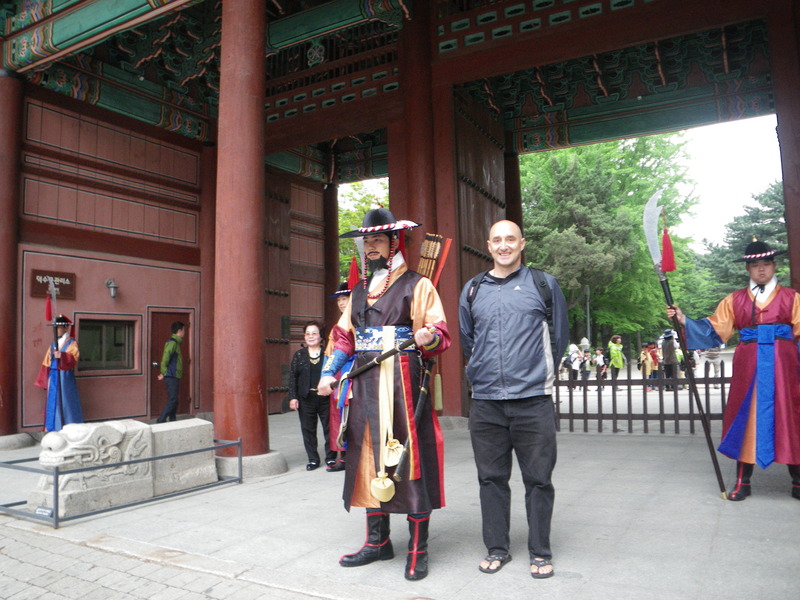
This palace, Deoksugung, has a mix of traditional Korean and modern style buildings,
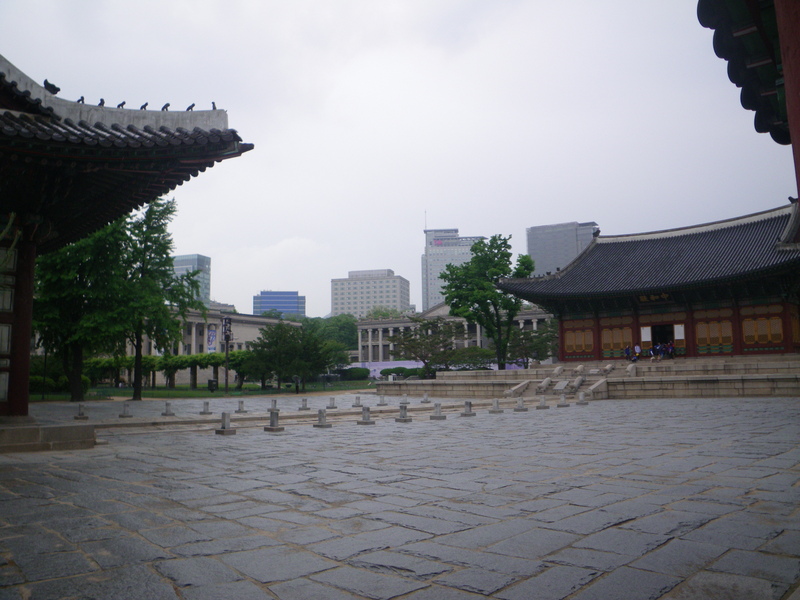

and an interesting device that uses gunpowder to fire 100 arrows at once.
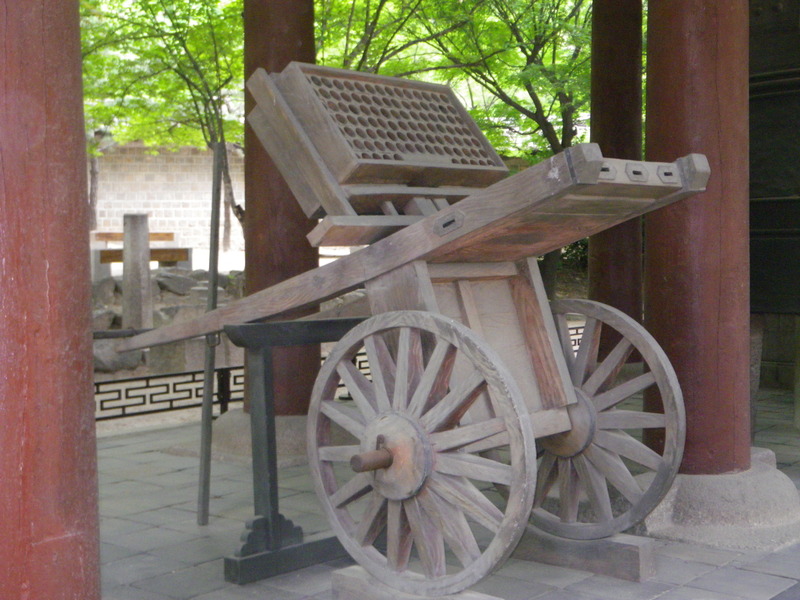
Finally, at the third palace, Gyeongbokgung, I got to see the changing of the guard
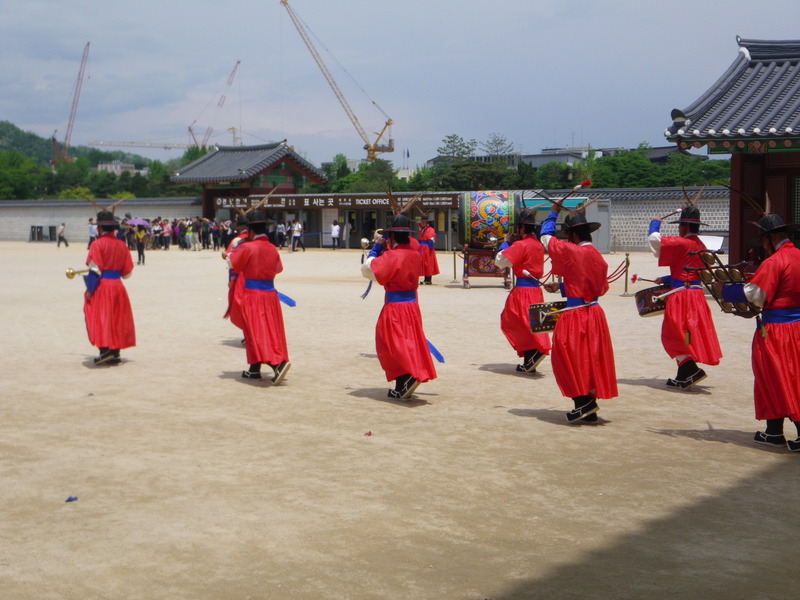
(see also these videos, which add up to 1.1GB and may be deleted sooner or later)